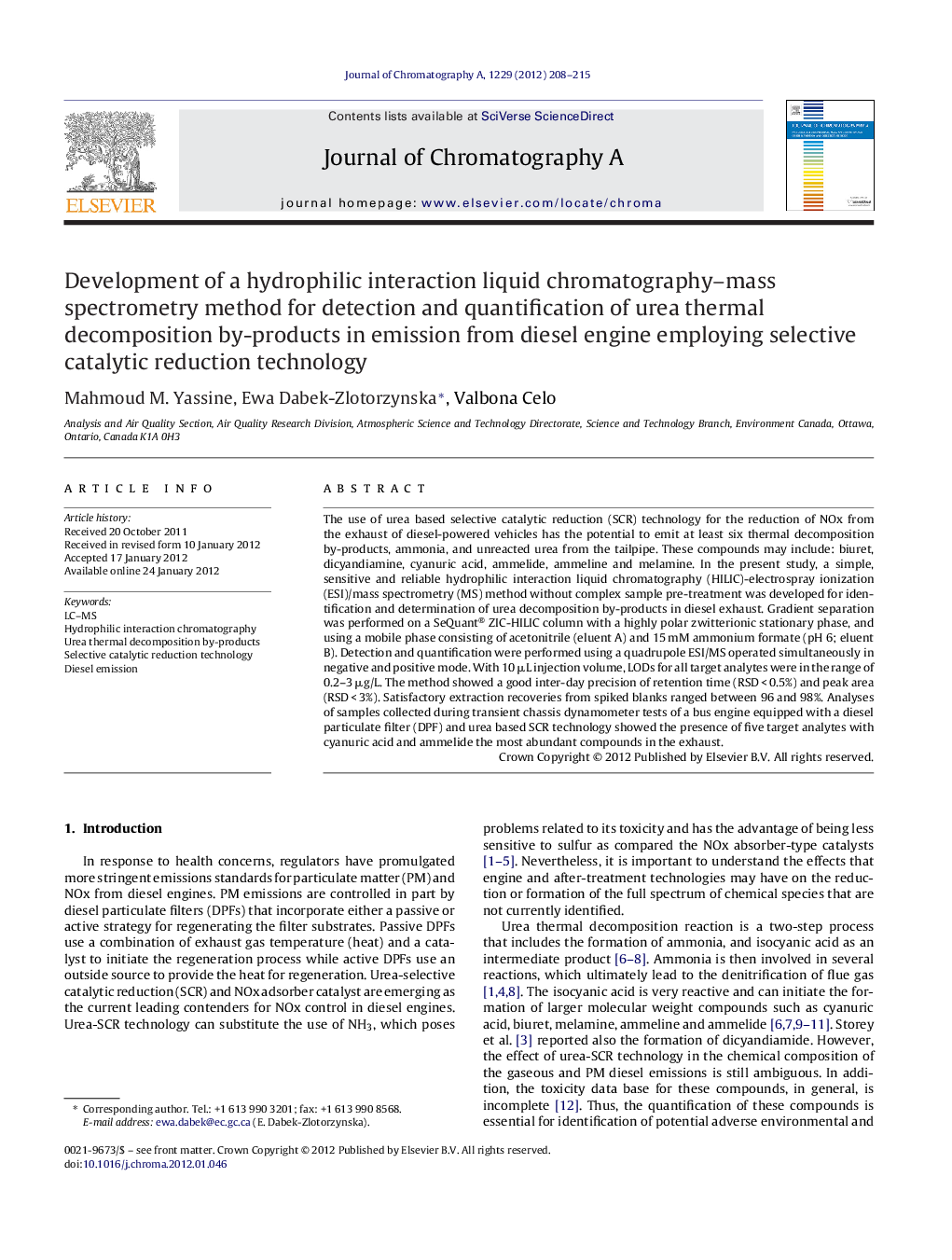| کد مقاله | کد نشریه | سال انتشار | مقاله انگلیسی | نسخه تمام متن |
|---|---|---|---|---|
| 1203049 | 1493696 | 2012 | 8 صفحه PDF | دانلود رایگان |

The use of urea based selective catalytic reduction (SCR) technology for the reduction of NOx from the exhaust of diesel-powered vehicles has the potential to emit at least six thermal decomposition by-products, ammonia, and unreacted urea from the tailpipe. These compounds may include: biuret, dicyandiamine, cyanuric acid, ammelide, ammeline and melamine. In the present study, a simple, sensitive and reliable hydrophilic interaction liquid chromatography (HILIC)-electrospray ionization (ESI)/mass spectrometry (MS) method without complex sample pre-treatment was developed for identification and determination of urea decomposition by-products in diesel exhaust. Gradient separation was performed on a SeQuant® ZIC-HILIC column with a highly polar zwitterionic stationary phase, and using a mobile phase consisting of acetonitrile (eluent A) and 15 mM ammonium formate (pH 6; eluent B). Detection and quantification were performed using a quadrupole ESI/MS operated simultaneously in negative and positive mode. With 10 μL injection volume, LODs for all target analytes were in the range of 0.2–3 μg/L. The method showed a good inter-day precision of retention time (RSD < 0.5%) and peak area (RSD < 3%). Satisfactory extraction recoveries from spiked blanks ranged between 96 and 98%. Analyses of samples collected during transient chassis dynamometer tests of a bus engine equipped with a diesel particulate filter (DPF) and urea based SCR technology showed the presence of five target analytes with cyanuric acid and ammelide the most abundant compounds in the exhaust.
► Exhaust from a bus engine equipped with diesel particulate filter and urea-selective reduction technology.
► Identification and quantification of urea thermal decomposition compounds in diesel emission were studied.
► A new HILIC-ESI/MS method has been developed.
► Five target analytes, with cyanuric acid and ammelide the most abundant compounds, were determined.
Journal: Journal of Chromatography A - Volume 1229, 16 March 2012, Pages 208–215